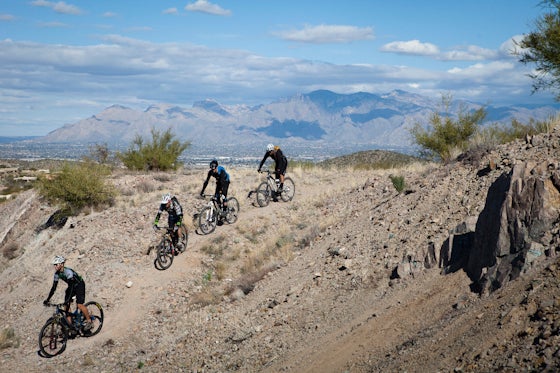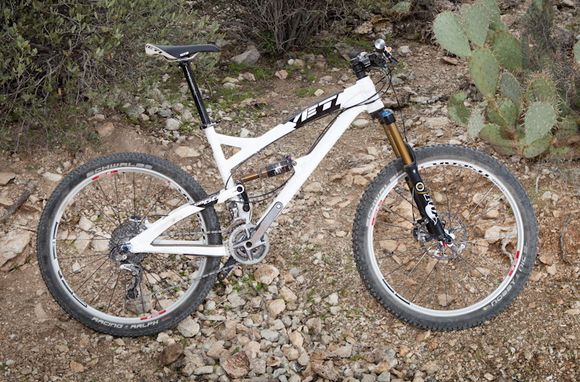
Beat up. That’s how I feel after the mountain bike phase of our 2012 bike tests. Here are the numbers: 76.5 miles of singletrack over 14 laps, 15 hours of ride time, 18 testers, 28 bikes, and 27 tubes. The latter is frustrating: Though every single tester rides tubeless on their personal bikes, we continue to have to review bikes with tubes because the manufacturers ship them that way. And it’s not just the time lost changing flats and patching that kills me. Tubes mean higher air pressures, which in turn makes for rougher riding and, inevitably, a tougher job perceiving how well a bike can ride.
Tubes aside, bikes are definitely riding well these days. Readers often ask me what’s the best bike out there, and the truth is that鈥攁s suspension designs continue to improve, parts get both lighter and tougher, and innovation from other markets seep into cycling (for instance Fox’s new Kashima coating on their forks and shocks borrowed from the motorcycle world)鈥攖here are very few bikes on the market that I wouldn’t recommend. Testing is increasingly a job of choosing the right tool for the terrain, making sure a bike is set up properly, and then discerning the nuances.

The trails in Tucson Mountain Park where we’ve been testing are rutted, jammed with rocks,聽often techy, and scattered with the occasional steps, ledges, and rubbly gullies. One bike that we found as versatile as the trails was the Yeti SB-66. With 150mm of travel front and rear, this trail bike packed enough suspension to soak up even the lumpiest rock gardens and chunkiest ledges. But it’s not just about how much travel, it’s about how that travel works.
Yeti’s new Switch suspension system is built around an eccentric mechanism that rotates rearward for the first two-thirds of the travel and then switches rotation direction for the remaining flex. In practical terms, that makes for extremely efficient pedaling (everyone agreed that this six-incher climbs more like a cross country rig) and paired with extremely plush trail manners. Our $6,150 rig came with the top spec (and was set up tubeless!). But another thing we love about Yeti is that the less pricey models are equipped with the identical suspension as the top end (e.g. Fox 32 F150 Kashima RLC fork and Fox Kashima RP23) so the bike will ride just as well even if you buy the $3,300 SB-66 Enduro.
On test days, you can tell the best bikes not just by tester comments but by the number of rides a bike gets, and the SB-66 was out on the trail nearly every lap. That’s especially notable given that the trails at Starr Pass are well suited to a 29ers and the SB-66 is a 26er.
We’ve packed up the mountain bikes and moved on to skinny tires. We’ll spend the next three days on a rolling loop around Saguaro National Park West that ends with the grind up Gates Pass. Check back for highlights from the road tests.